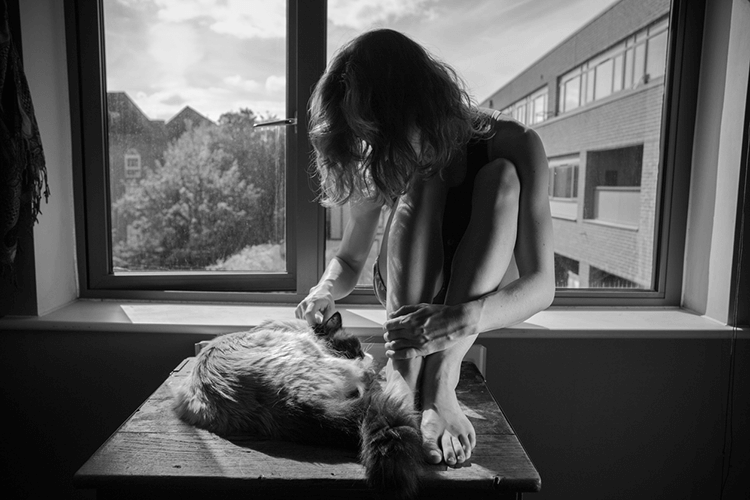Nowadays it seems like cats have conquered the world — or at least the internet and our hearts — so in retrospect it’s surprising that despite homo sapiens’ 10,000-year friendship with felis catus, the two species didn’t move in together until the mid-20th century.
Sure, writers from Charles Dickens (“What greater gift than the love of a cat?”) to Robert Heinlein (“How we behave toward cats here below determines our status in heaven”) affirmed humanity’s feline fascination. And there were always cat-lovers who opened their homes to the little tigers, going all the way back to ancient Egypt.
Yet it wasn’t until American Edward Lowe accidentally invented clay litter in 1947 that cats had a permanent place in human homes.
Pet care: Americans spend a fortune on their animals
It was an important step in establishing cats as members of the family, helping to fuel a modern pet care industry worth an estimated $69 billion in 2017, according to the American Pet Products Association.
That figure includes veterinary care, services like grooming, and supplies, but the biggest expenditure is food — Americans spent more than $28 billion on pet food in 2016, the APPA notes.
It’s no accident that a premium pet food brand like Blue Buffalo would latch on to that fact in advertising. The Wilton, Connecticut-based pet food supplier’s slogan speaks to the change in attitude over the past century or so: “Love Them Like Family, Feed Them Like Family.”
Gourmet meals for kitty
Some cat owners take it even further, cooking up meals for their cats just like they cook up meals for their children and spouses. Websites like CatInfo.org, WebMD and The Conscious Cat promote home-prepared meals for housecats and help caretakers transition their four-legged family members from diets of processed foods to fresh meat.
 “It is my strong preference to feed a diet that is a safe balance between raw and cooked,” veterinarian Lisa A. Pierson writes on CatInfo.org, explaining why she uses the term “homemade” instead of “raw.”
“It is my strong preference to feed a diet that is a safe balance between raw and cooked,” veterinarian Lisa A. Pierson writes on CatInfo.org, explaining why she uses the term “homemade” instead of “raw.”
The prevalence of home-prepared pet meals has also fueled an ongoing debate about “human grade” pet food, with some arguing it’s a necessary evolution in the diets of pets, while others argue it’s nothing but a marketing term that can mean “anything the manufacturer says it does.”
Improvements in veterinary care
So if we’ve welcomed our cats into our homes as family members, and we’ve begun feeding them like family, the next logical step is providing veterinary care that resembles human health care — hopefully with less paperwork.
The reasons may not be entirely altruistic — a 2016 survey by the Human Animal Bond Research Initiative Foundation (HABRI) and the American Animal Hospital Association found 92 percent of pet owners are likely to maintain their pets’ health if they’re educated on how pets positively impact humans. From therapy dogs helping hospital patients recover, to cat owners de-stressing to the sound and vibrations of purring, animals have a way of lowering blood pressure and even helping humans battle depression.
“When people find out that pets improve heart health, decrease stress, help alleviate depression and address specific conditions that include autism, PTSD and Alzheimer’s, they become more focused on caring for their pet’s health,” said Steven Feldman, executive director of HABRI. “More awareness of human-animal bond science improves veterinary care and leads to a healthier pet population.”
Pet industry analysts say the trend will continue, with people willing to spend more money to make sure their cats and dogs remain healthy and eating right. And just like Edward Lowe revolutionized the practice of keeping cats as indoor pets in 1947, modern companies offer new innovations to make life easier for pet and caretaker.
CatGenie, the publisher of Front Page Meews, has rendered litter obsolete for cat owners who are concerned about the environmental impact of strip-mined litter with the CatGenie Self-Washing Cat Box. A number of companies compete in the cat drinking fountain business, based on the premise that cats are likely to drink more often if their water bowls are fresh and topped off with flowing water. And even celebrity chefs like Rachel Ray are getting into the pet care industry with meal packages that look more like frozen dinners for people than for pets.
One thing’s for sure: The $69 billion pet care industry will continue to grow as the distinction blurs between two-legged and four-legged family members.






